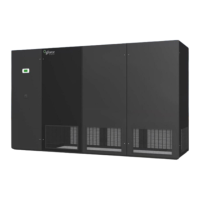29
Refrigerant Piping Protection
The refrigerant in the system(s) is under high-pressure and this pressure can rapidly increase
if the refrigerant is unintentionally confined (or trapped) between isolation devices such as
service valves, liquid line solenoid valves, expansion valves, etc. If the ambient temperature
surrounding the piping system increases, this may cause the contained refrigerant pressure to
increase to an unacceptable level.
WARNING: This increased pressure can cause piping ruptures,
discharge of refrigerant, pollution, equipment damage, injury or death.
Use extreme caution when:
Installing the piping lines and make certain that these isolation devices are
open to prevent unintended containment (trapping) of refrigerant.
When charging a refrigerant system, do not exceed the Design
Pressure indicated on the unit nameplate.
Ensure that pressure has a path to expand when cutting or making
connections, disconnections and piping repairs.
The installing contractor must review the piping system and guard against these possible
areas where the refrigerant could be confined. If the areas cannot be vented and allow the
refrigerant to expanded freely or eliminate pressure increases, the installing contractor must
field supply pressure relief devices.
Additionally, the installing contractor must consult local building and piping codes regarding
installing pressure-safety devices in the required areas of the piping system(s) that could be
unintentionally isolated during field installation, maintenance or repairs of the refrigerant
systems.
After a “Direct Type” Relief Device has discharged once, it should be replaced. The “Direct
Type” Relief Device is designed to reclose automatically at a predetermined pressure, but
reliability of the device to reseal tightly and to operate at the designed pressure cannot be
guaranteed after discharging. Be safe and replace the device after such an occurrence.
NOTE: Receivers are often installed on condensers and condensing units.
The receiver includes a safety pressure-device to protect the receiver, but the
receiver also includes service valves which, if closed, will isolate this
pressure-safety device and only protect the receiver. If these valves are
closed, the rest of the piping system would not be protected from unintended
refrigerant pressure in- creases. Again, the installing contractor must review
the piping system and guard against trapping the refrigerant by installing field
supplied pressure-safety devices.

